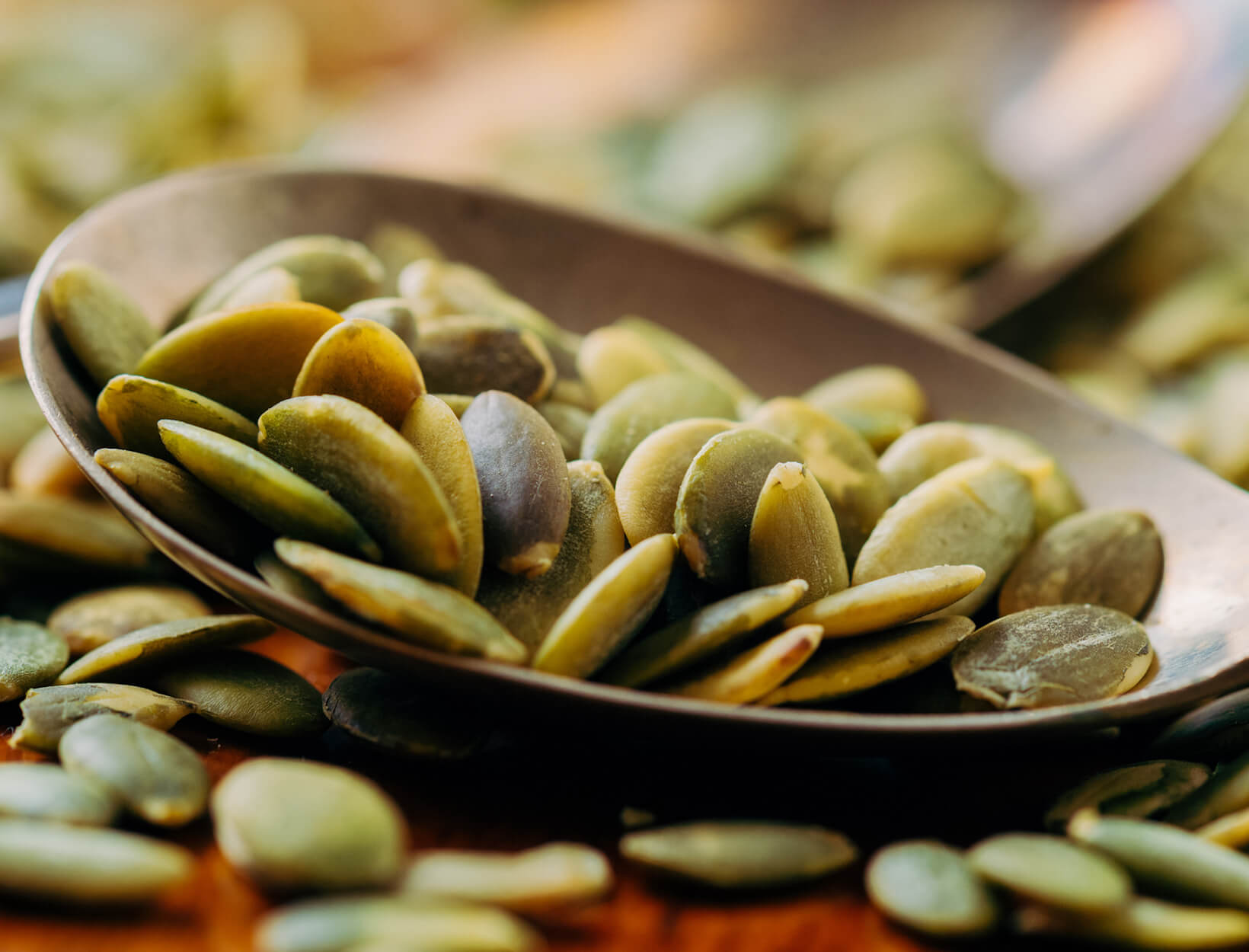[ad_1]
Can Seed Cycling Bring Your Hormones into Balance?

When a colleague mentioned that she was considering seed cycling to help regulate her mood and periods while she was transitioning off of birth control, I was curious. What is seed cycling, how do you do it, and does it really work—and if so, how?
I called Danica Thornberry, DAOM, and Jolene Brighten, ND, who have used seed cycling in their practices for over a decade. They’ve found, anecdotally, that it can be beneficial for helping to regulate menstrual cycles, address fertility concerns, and manage symptoms of PMS and perimenopause. (Of course, seed cycling should not be used as a primary treatment—consult your doctor for any reproductive or fertility concerns.)
What Is Seed Cycling?
Seed cycling involves eating four types of seeds throughout your menstrual cycle to help stabilize your hormones: flax and pumpkin during the first half of the menstrual cycle (the follicular phase), and sesame and sunflower during the second half (the luteal phase). All seeds should be ground and consumed in a one-to-one ratio.
Quick reminder of the menstrual phases, if you need it: The follicular phase includes the first 14 days of the menstrual cycle, when the follicle is maturing and estrogen levels are gradually increasing until they reach a peak level prior to ovulation. Progesterone levels are generally low during this phase. The luteal phase is the 14 days following ovulation, when the follicle ruptures, degrades, and transforms into the corpus luteum, a structure that secretes progesterone, which is thus high during this phase.
What You Need
Raw seeds (flax, pumpkin, sesame, and sunflower), a blender, and two airtight containers to store your seed mixtures in.
What to Do
You’ll need two seed mixtures: one for your follicular phase, which starts on day 1 of your period, and a second batch for your luteal phase, which starts immediately after ovulation (typially on day 15, but this varies from person to person).
-
Prepare the flax-and-pumpkin-seed mixture. To prepare for the first 14 days, grind equal parts flax and pumpkin seeds (seven tablespoons each) on low speed for about 30 seconds. “Do not use your coffee bean grinder to grind your seeds—it will affect the taste of your coffee,” says Brighten. Store the mixture in the refrigerator or freezer in a sealed airtight container.
-
Consume the flax-and-pumpkin-seed mixture. Each day, for the next 14 days, add one tablespoon of the flax-and-pumpkin-seed mixture into your food or meal of choice. Thornberry suggests sprinkling it on top of your morning oatmeal or parfait, blending it into your favorite smoothie, or peppering it on your favorite salad or root vegetable.
-
Prepare the sesame-and-sunflower-seed mixture. To prepare for the next 14 days, grind equal parts sesame and sunflower seeds (7 tablespoons each). Store the mixture in the refrigerator or freezer in a sealed airtight container.
-
Consume the sesame-and-sunflower-seed mixture. Each day, for the next 14 days, add one tablespoon of the sesame-and-sunflower-seed mixture to your food or meal of choice—avocado toast, fruit salad, or chia pudding.
Note: If you’re not having periods, Brighten recommends following the moon cycle, which is roughly 28 or 29 days. Use the new moon as a marker for menstruation (day 1) and the full moon as a marker for ovulation (day 14).
Anecdotal Results
“Within one to two months is the window where we see the seed cycling really stabilizing women’s hormones,” says Thornberry. She has reportedly seen improvement in PMS symptoms (less irritability, fewer headaches, and less acne); fewer perimenopause symptoms (reduced hot flashes, irritability, swollen breasts, headaches, fatigue, and vaginal dryness); and better fertility, with improved cycle regularity.
“We usually use this as an adjunct therapy,” says Brighten. “It’s something that you are doing that helps you also bring awareness to your cycle. However, you will hear stories out there, and I’ve had those patients as well that are like, ‘I only did seed cycling and my skin cleared up’ or ‘My periods are regular.’ And I’m like, ‘Well, that’s amazing.’”
How It Works
There’s not enough research to explain how seed cycling works. But the hypothesis is that the seeds provide a combination of nutrients that can potentially support the menstrual cycle.
Another theory involves lignans, or phytoestrogens, which are present in small amounts in flaxseeds and sesame seeds. They may work to balance estrogen levels throughout the cycle (and potentially during perimenopause). Brighten says that the sesame seeds may be helping encourage healthy progesterone levels, which may modulate inflammation.
Zinc in the pumpkin seeds may help support the developing egg and follicle. The selenium and vitamin E in the sunflower seeds may act as antioxidants to support implantation and help balance estrogen levels.
“Both flaxseeds and pumpkin seeds are also rich in antioxidants and omega fatty acids that support the reproductive system,” Brighten says. And the fiber in the seeds may benefit the gut, too, assisting in regulating bowel movements and the removal of waste (and excess estrogen within that waste).
Efficacy
Without the research to support it, scientists aren’t sure how effective seed cycling is. If you’re looking for alternative approaches to support your reproductive health, a simple protocol of four seeds may be worth a try.
This article is for informational purposes only. It is not, nor is it intended to be, a substitute for professional medical advice, diagnosis, or treatment and should never be relied upon for specific medical advice. To the extent that this article features the advice of physicians or medical practitioners, the views expressed are the views of the cited expert and do not necessarily represent the views of goop.
[ad_2]
Source link

